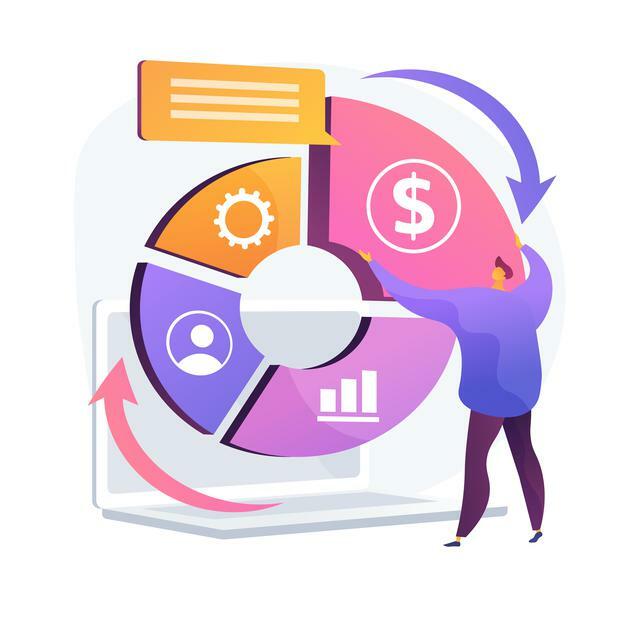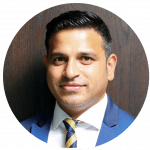If you think financial planning is a one-time activity, then you must know that it is an ongoing process. The sole objective of sound financial planning is to provide you an optimal route to your goals.
 So, whether you want to invest for a retirement plan or grow your savings, it is best to put money to work in markets. But successful short-term or long-term investing is not as simple as just throwing money at the stock market.
So, whether you want to invest for a retirement plan or grow your savings, it is best to put money to work in markets. But successful short-term or long-term investing is not as simple as just throwing money at the stock market.
It is all about having a Balanced Investment Portfolio with proper investment portfolio management so that you can obtain and coordinate investments that play different roles. Let us understand what a Balanced Investment Portfolio is and why is it so important to have one.
What Is A Balanced Investment Portfolio?
An investment portfolio is a coordinated collection of all your investments. You may have diversified investment options in hand, like buying a stock you think is good, buying some bonds to produce income or a certain amount of your money can safely sit in a bank deposit account. You will have different investments playing different roles, but it is not necessary that they will be coordinated in any meaningful way.
A coordinated portfolio assembles different types of investments, in which we should understand how different investments interact, and adjustments should be made periodically to keep the investments in sync.
But a Balanced Investment Portfolio follows the idea of coordinating investments by incorporating assets that have clearly different risk characteristics, like:
- Stocks: Stocks are an asset class with strong return potential over the long run but are prone to declines from time to time.
- High-Quality Bonds: This is a slow-and-steady asset class that produces regular amounts of income but has limited long-term upside.
- Others: Other asset classes like cash equivalents to commodities and real estate have very distinct investment characteristics.
A Balanced Investment Portfolio helps recognize the value in having more than one type of investment. Also, if you are going to own different asset classes, it is best to coordinate the specific holdings and the amounts you own, rather than to put them together randomly. The proportion in which the asset classes are owned should depend on the goals of the portfolio.
Why Is It Crucial To Have A Balanced Portfolio?
A sound savings investment is all about diversification. And a Balanced Investment Portfolio is almost always better equipped to cushion a fall while allowing you to get a fair share of the rallies. You should not only strive for a variety of investments, but also for investment options that fit well together.
A Balanced Investment Portfolio is like a type of one-stop shopping. Instead of dealing with one account for stocks, another for cash reserves, yet another for your bonds and still more for other investment types, you can have everything in one place, which will make your investment program easier to monitor. It gives you a mix of different investments that should be kept in proportion. Typically, different types of assets go up and down in value at different times. So, it is helpful to have your holdings adjusted periodically, as part of a coordinated approach in a balanced portfolio.
Asset allocation is usually considered the most crucial of all investment decisions, so having it professionally coordinated rather than occurring randomly is a wiser decision to make.
How Do You Create A Balanced Investment Portfolio?
The truth is there isn’t a one-size-fits-all format, when it comes to create a Balanced Investment Portfolio.
- As an old thumb rule, you should subtract your age from 100 and that is the percentage of your portfolio that you should keep in stocks. The logic behind this method is that younger investors have longer time horizons to weather the storms in the stock market. But historically, equities have outperformed other types of assets in the long run.
- But if you are nearing or in retirement, you may need your money sooner. So, in such a case, investing more heavily in securities like fixed-income investments that are usually considered “safe” is a better idea.
- If you are risk-conservative and want minimal risk on your portfolio, you can divide 50% of your portfolio to bonds, 30% to short-term investments, 14% to domestic stocks and rest 6% to foreign stocks.
- If you are young and adventurous, you are considered risk-aggressive. So, you can have a sample portfolio with 60% weighted towards domestic stocks, 25% on foreign stocks and rest 15% towards bonds, real estate, commodities or cash.
- But if you are new to commodities, you should start out with a relatively modest amount, anywhere between 3% – 5% of your portfolio. This will give you an idea of how comfortable you feel with this new member of your financial family. You can test how commodities contribute to your overall portfolio’s performance during one or two quarters. And if you are satisfied, you can gradually increase your percentage.
- Financial advisors recommend a 5% – 10% allocation of your overall portfolio to real estate. For most investors, buying a real estate investment trust, that can be purchased in either a mutual or exchange-traded fund, is the easiest way to go.
Where Can I Invest My Money In Dubai?
When investing money in Dubai, a mix of stocks, bonds, and cash can be a good strategy. There are three major asset categories. Let’s take a closer look at characteristics.
- Stocks: Stocks have a history of greatest risks and highest returns among the lot. As an asset category, it offers the greatest potential for growth, but its volatility makes it a very risky investment in the short term. But many investors who wish to try the volatile returns of stocks over long periods of time, have been rewarded with strong positive returns.
- Bonds: These are less volatile than stocks and offer modest returns. If the investor is approaching a financial goal, he can increase his bond holdings, relative to his stock holdings. This is because the reduced risk of holding more bonds will be attractive to the investor, despite the lower potential for growth. Some categories of bonds provide high returns, just like stocks. But these bonds (also called high-yield or junk bonds) carry higher risks.
- Cash: Cash and cash equivalents like savings deposits, treasury bills, certificates of deposit, money market funds and money market deposit accounts are the safest investments, but offer the lowest returns of the 3 major asset categories. The principal concern for investors investing in cash equivalents is inflation risk, in which inflation will outpace and erode investment returns over time.
These are the 3 asset categories you may want to choose from when investing in a retirement savings program. But if you are an investor just starting out, make sure you do not put all the eggs in the same basket. Never put all of your money in one stock or one sector. Apart from stocks, bonds or cash, there are other options you can consider.
Some investors include asset categories like commodities, Real Estate Investment Trusts (REITs) and Exchange-Traded Funds (ETFs) in their portfolio.
ETFs are the simplest and cheapest way to get into the stock and bond markets. The best part is that ETFs trade like stocks, that can be bought or sold whenever the markets are open. These also offer investors diversification as a single ETF can hold stocks or bonds for hundreds of foreign companies. Investment portfolios with real estate funds, which include REITs offer protection against inflation. The funds also provide unique opportunities in real estate, which you may not, otherwise be able to take advantage of on your own.
A proper savings investment along with investment portfolio management can help reduce risks and make your returns more stable over the long-term.

Asfar is an Independent Financial Advisor and Associate Partner with Continental Group based in Dubai, UAE with over 12 years of experience in the region. His clientele includes high networth individuals, corporations, C suite executives, business owners, and entrepreneurs in the region.
Although with proper planning and consistent effort, you can save, invest and distribute your own finances. It is always good to get some professional advice. If you need help in planning your finances in the short, medium, or long term, I can help you do so. You can write to me with your questions and comments to asfar@profinancial.solutions
